How Neutrinos Could Solve The Three Greatest Open Questions In Physics

Dark matter, dark energy, and why there’s more matter than antimatter? There’s an experiment to explore if neutrinos could solve all three.
When you take a look at the Universe in great detail, a few facts jump out at you that might be surprising. All the stars, galaxies, gas, and plasma out there are made of matter and not antimatter, even though the laws of nature appear symmetric between the two. In order to form the structures we see on the largest scales, we require a huge amount of dark matter: about five times as much as all the normal matter we possess. And to explain how the expansion rate has changed over time, we need a mysterious form of energy inherent to space itself that’s twice as important (as far as energy is concerned) as all the other forms combined: dark energy. These three puzzles may be the greatest cosmological problems for the 21st century, and yet the one particle that goes beyond the standard model — the neutrino — just might explain them all.
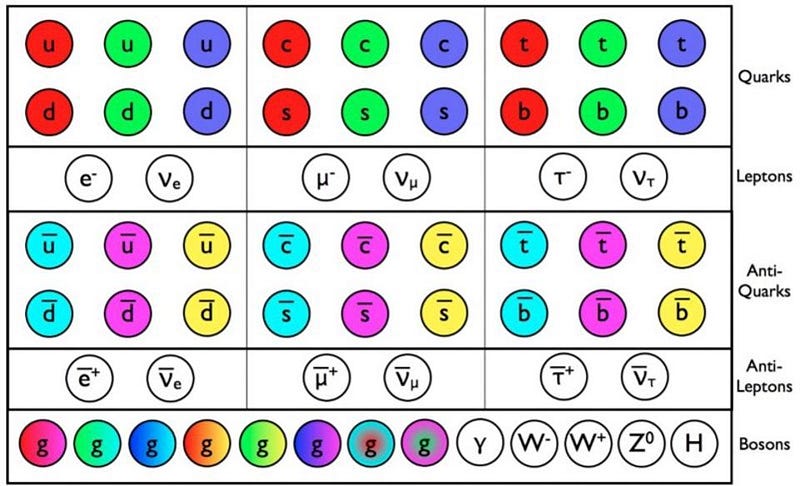
Here in the physical Universe, we have two types of Standard Model:
- The Standard Model of particle physics (above), with six flavors of quarks and leptons, their antiparticles, the gauge bosons, and the Higgs.
- The Standard Model of cosmology (below), with the inflationary Big Bang, matter and not antimatter, and a history of structure formation that leads to stars, galaxies, clusters, filaments, and the present-day Universe.
Both Standard Models are perfect in the sense that they explain everything we can observe, but both contain mysteries we cannot explain. From the particle physics side, there’s the mystery of why the particle masses have the values that they do, while on the cosmology side, there are the mysteries of what dark matter and dark energy are, and why (and how) they came to dominate the Universe.
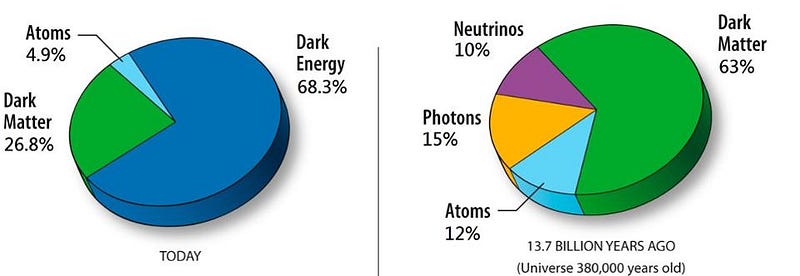
The big problem in all of this is that the Standard Model of particle physics explains everything we’ve ever observed — every particle, interaction, decay, etc. — perfectly. We’ve never observed a single interaction in a collider, a cosmic ray, or any other experiment that runs counter to the Standard Model’s predictions. The only experimental hint we have that the Standard Model doesn’t give us everything we observe is the fact of neutrino oscillations: where one type of neutrino transforms into another as it passes through space, and through matter in particular. This can only happen if neutrinos have a small, tiny, non-zero mass, as opposed to the massless properties predicted by the Standard Model.
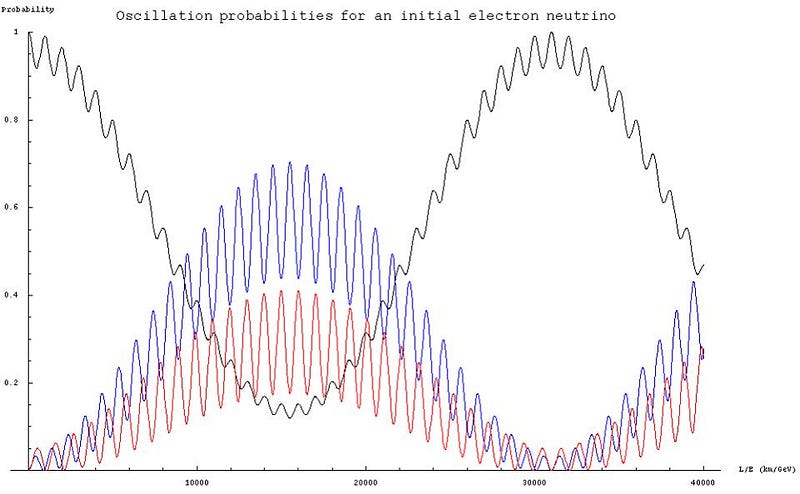
So, then, why and how do neutrinos get their masses, and why are those masses so tiny compared to everything else?
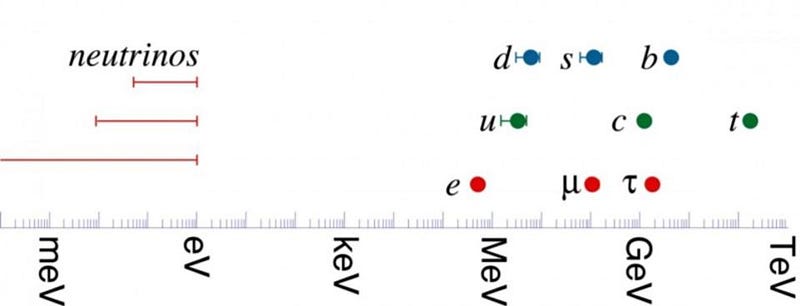
There’s even more bizarreness afoot when you take a closer look at these particles. You see, every neutrino we’ve ever observed is left-handed, meaning if you point your left-hand’s thumb in a certain direction, your fingers curl in the direction of the neutrino’s spin. Every anti-neutrino, on the other hand (literally), is right-handed: your right thumb points in its direction of motion and your fingers curl in the direction of the anti-neutrino’s spin. Every other fermion that exists has a symmetry between particles and antiparticles, including equal numbers of left-and-right-handed types. This bizarre property suggests that neutrinos are Majorana (rather than the normal Dirac) fermions, where they behave as their own antiparticles.
Why could this be? The simplest answer is through an idea known as the see-saw mechanism.
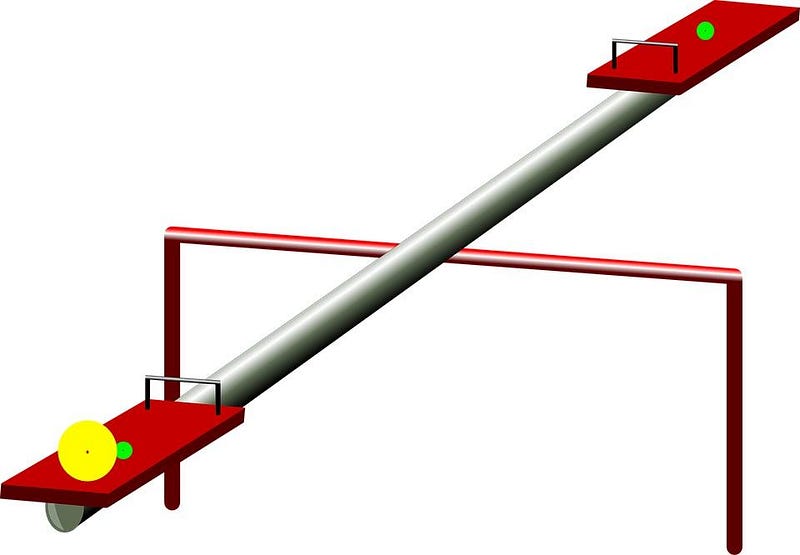
If you had “normal” neutrinos with typical masses — comparable to the other Standard Model particles (or the electroweak scale) — that would be expected. Left-handed neutrino and right-handed neutrinos would be balanced, and would have a mass of around 100 GeV. But if there were very heavy particles, like the yellow one (above) that existed at some ultra-high scale (around 10¹⁵ GeV, typical for the grand unification scale), they could land on one side of the see-saw. This mass would get mixed together with the “normal” neutrinos, and you’d get two types of particles out:
- a stable, neutral, weakly interacting ultra-heavy right-handed neutrino (around 10¹⁵ GeV), made heavy by the heavy mass that landed on one side of the see-saw, and
- a light, neutral, weakly interacting left-handed neutrino of the “normal” mass squared over the heavy mass: about (100 GeV)²/(10¹⁵ GeV), or around 0.01 eV.
That first type of particle could easily be the mass of the dark matter particle we need: a member of a class of cold dark matter candidates known as WIMPzillas. This could successfully reproduce the large-scale structure and gravitational effects we need to recover the observed Universe. Meanwhile, the second number lines up extremely well with the actual, allowable mass ranges of the neutrinos we have in our Universe today. Given the uncertainties of one or two orders of magnitude, this could describe exactly how neutrinos work. It gives a dark matter candidate, an explanation for why neutrinos would be so light, and three other interesting things.
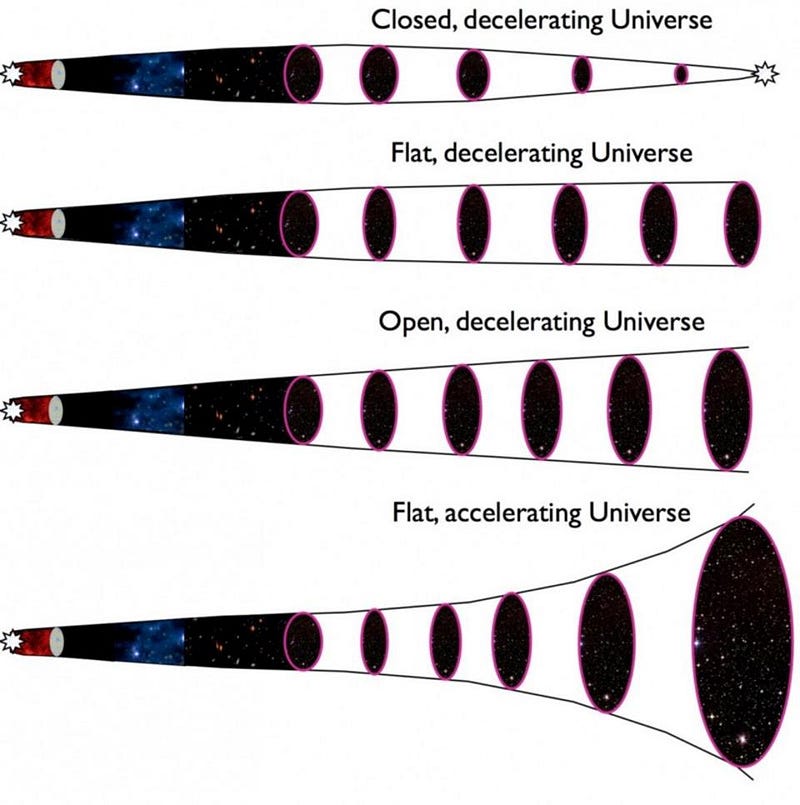
Dark energy. If you try and calculate what the zero-point energy, or vacuum energy, of the Universe is, you get a ridiculous number: somewhere around Λ ~ (10¹⁹ GeV)⁴. If you’ve ever heard of people saying that the prediction for dark energy is too large by about 120 orders of magnitude, this is where they get that number from. But if you replace that number of 10¹⁹ GeV with the mass of the neutrino, at 0.01 eV, you get a number that’s right around Λ ~ (0.01 eV)⁴, which comes out to match the value we measure almost exactly. This isn’t a proof of anything, but it’s extremely suggestive.
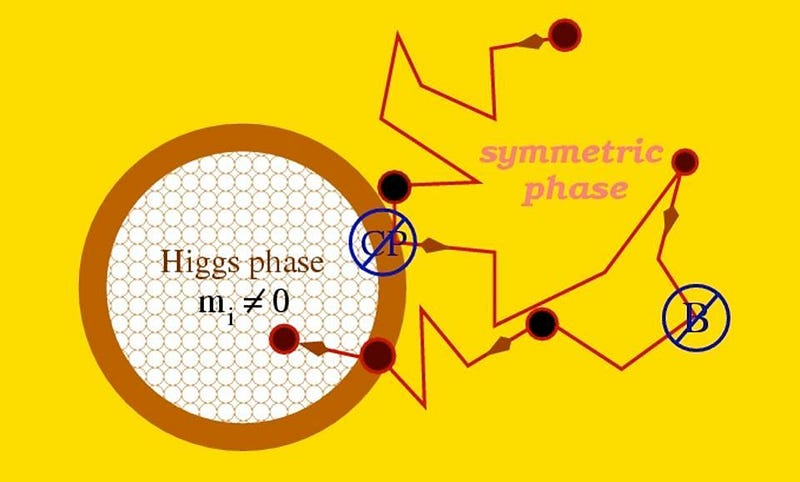
A baryon asymmetry. We need a way to generate more matter than antimatter in the early Universe, and if we have this see-saw scenario, it gives us a viable way to do it. These mixed-state neutrinos can create more leptons than anti-leptons through the neutrino sector, giving rise to a Universe-wide asymmetry. When the electroweak symmetry breaks, a series of interactions known as sphaleron interactions can then give rise to a Universe with more baryons than leptons, since baryon number (B) and lepton number (L) aren’t individually conserved: just the combination B — L. Whatever lepton asymmetry you start with, they’ll get converted into equal parts baryon and lepton asymmetry. For example, if you start with a lepton asymmetry of X, these sphalerons will naturally give you a Universe with an “extra” amount of protons and neutrons that equals X/2, while giving you that same X/2 amount of electrons and neutrinos combined.
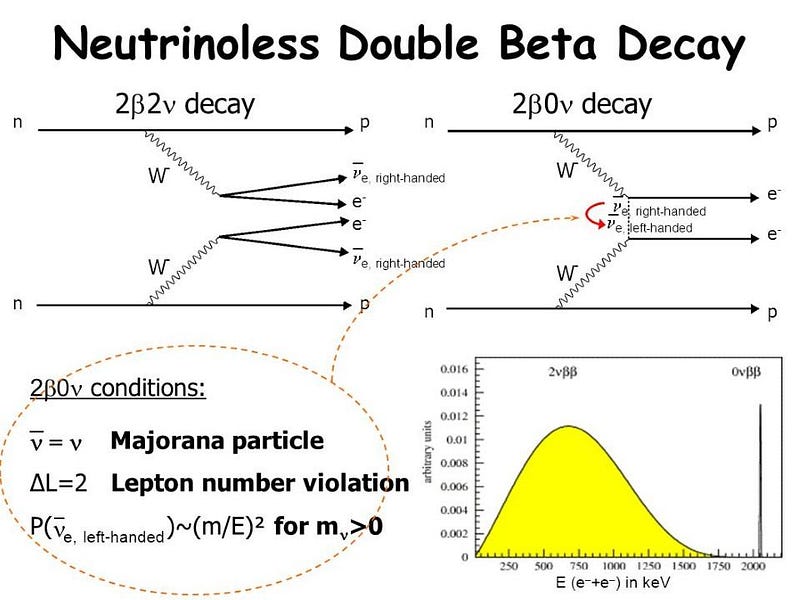
A new type of decay: neutrinoless double beta decay. The theoretical idea of a source for dark matter, dark energy, and the baryon asymmetry is fascinating, but you need an experiment to detect it. Until we can directly measure neutrinos (and anti-neutrinos) left over from the Big Bang, a feat that’s practically impossible due to the low cross-section of these low-energy neutrinos, we won’t know how to test whether neutrinos have these properties (Majorana) or not (Dirac). But if a double beta decay that emits no neutrinos occurs, we’ll know that neutrinos do have these (Majorana) properties after all, and all of this suddenly could be real.

Perhaps ironically, the greatest advance in particle physics — a great leap forward beyond the Standard Model — might not come from our greatest experiments and detectors at high-energies, but from a humble, patient look for an ultra-rare decay. We’ve constrained neutrinoless double beta decay to have a lifetime of more than 2 × 10²⁵ years, but the next decade or two of experiments should measure this decay if it exists. So far, neutrinos are the only hint of particle physics beyond the Standard Model. If neutrinoless double beta decay turns out to be real, it might be the future of fundamental physics. It could solve the biggest cosmic questions plaguing humanity today. Our only choice is to look. If nature is kind to us, the future won’t be supersymmetry, extra dimensions, or string theory. We just might have a neutrino revolution on our hands.
Ethan Siegel is the author of Beyond the Galaxy and Treknology. You can pre-order his third book, currently in development: the Encyclopaedia Cosmologica.





